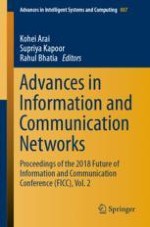2019 | OriginalPaper | Chapter
Investigating the Effective Use of Machine Learning Algorithms in Network Intruder Detection Systems
Authors : Intisar S. Al-Mandhari, L. Guan, E. A. Edirisinghe
Published in: Advances in Information and Communication Networks
Publisher: Springer International Publishing
Activate our intelligent search to find suitable subject content or patents.
Select sections of text to find matching patents with Artificial Intelligence. powered by
Select sections of text to find additional relevant content using AI-assisted search. powered by
